Wat Phra Pathom Chedi, Nakhon Pathom Thailand
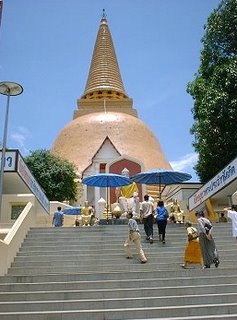 On coming toward the Nakhon Pathom city, the first glimpse of the towering Phra Pathom Chedi is overpowering. lt is one of the largest pagodas in the world and in Thailand, by far the most holy of all Buddhist structures. The original pagoda was constructed more than 2,000 years ago in the stupa design of an upside down bowl shape. A replica of the original pagoda stands south of the present one. ln the year 1853, King Rama lV commanded the reconstruction of a new huge pagoda covering the original one. lt has a height of 120.45 metres and a total length of 234,75 metres around the base. A nearby museum contains a wealth of priceless relics and many of the stone carvings found in and around Nakhon Pathom. At the four points of the compass in the outer courtyard are four Wiharas (halls) containing images of Buddha in various postures.
On coming toward the Nakhon Pathom city, the first glimpse of the towering Phra Pathom Chedi is overpowering. lt is one of the largest pagodas in the world and in Thailand, by far the most holy of all Buddhist structures. The original pagoda was constructed more than 2,000 years ago in the stupa design of an upside down bowl shape. A replica of the original pagoda stands south of the present one. ln the year 1853, King Rama lV commanded the reconstruction of a new huge pagoda covering the original one. lt has a height of 120.45 metres and a total length of 234,75 metres around the base. A nearby museum contains a wealth of priceless relics and many of the stone carvings found in and around Nakhon Pathom. At the four points of the compass in the outer courtyard are four Wiharas (halls) containing images of Buddha in various postures.Location: Nakhon Pathom, Central Thailand.
Source : thaibuddhist.com

















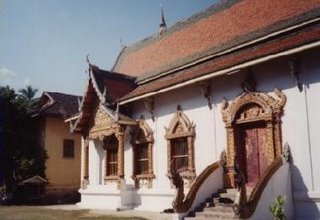 Nagas on a Viharn in Wat Chiang Mun, Chiang Mai
Nagas on a Viharn in Wat Chiang Mun, Chiang Mai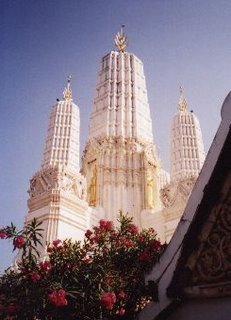 Prangs in Wat Mahathat, Petchaburi
Prangs in Wat Mahathat, Petchaburi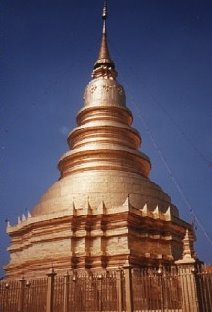

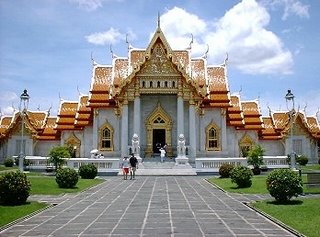 Wat Benchamabophit, also known as the Marble Temple, this temple is on Sri Ayutthaya Road near the Chitralada Palace. The temple is well-known because its main building was constructed during the reign of King Rama V, as the source of religious heritage for the future generations of Thais. It employs European ecclesiastic details, such as stained glass windows, and contains a superb cloister collection of bronze Buddha images. The main shrine was originally intended to house a highly sacred and revered Budddha image known as Phra Buddha Shinaraja, which at the time was located in the province of Phitsanulok (approximately 300 km north of
Wat Benchamabophit, also known as the Marble Temple, this temple is on Sri Ayutthaya Road near the Chitralada Palace. The temple is well-known because its main building was constructed during the reign of King Rama V, as the source of religious heritage for the future generations of Thais. It employs European ecclesiastic details, such as stained glass windows, and contains a superb cloister collection of bronze Buddha images. The main shrine was originally intended to house a highly sacred and revered Budddha image known as Phra Buddha Shinaraja, which at the time was located in the province of Phitsanulok (approximately 300 km north of  The Marble Temple, built entirely out of white marble as its name suggests, manifests the devotion that Thai people have for Buddhism. The architectural and engineering detail put in to the construction of the
The Marble Temple, built entirely out of white marble as its name suggests, manifests the devotion that Thai people have for Buddhism. The architectural and engineering detail put in to the construction of the